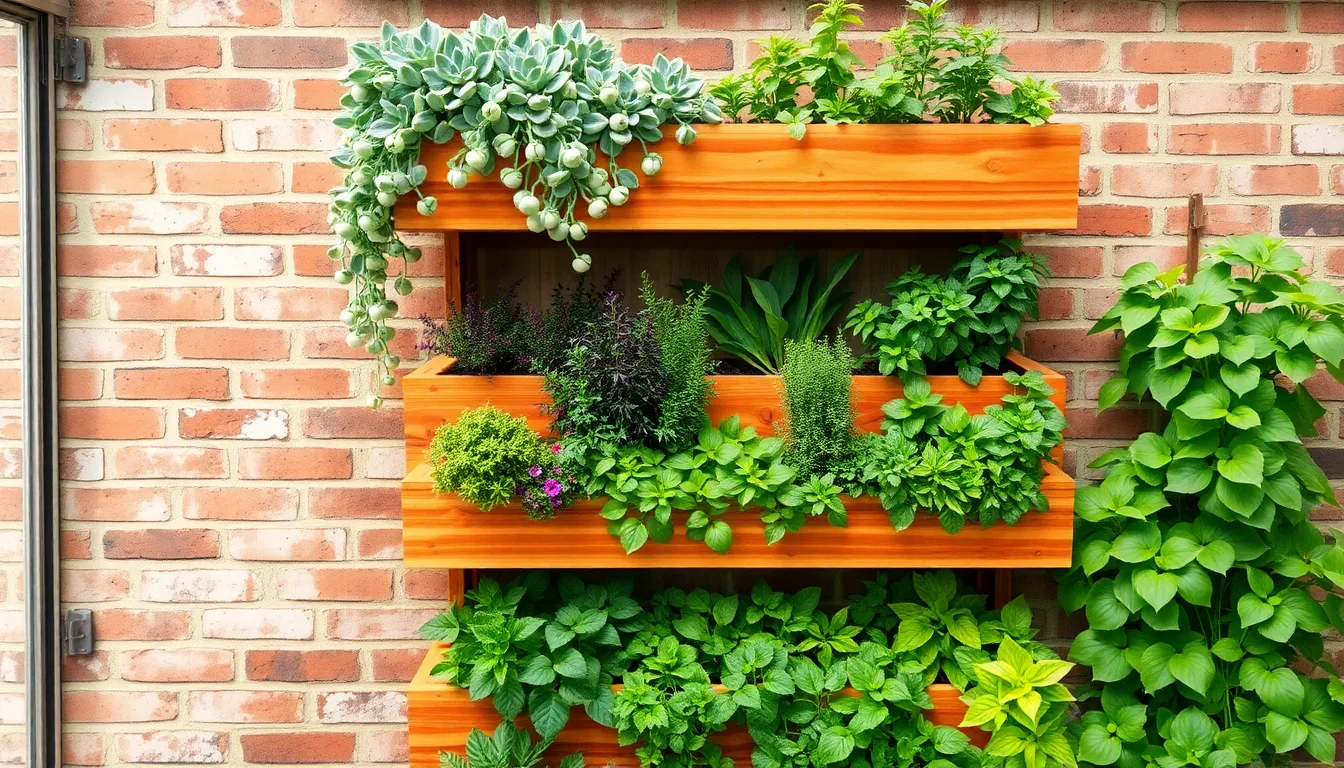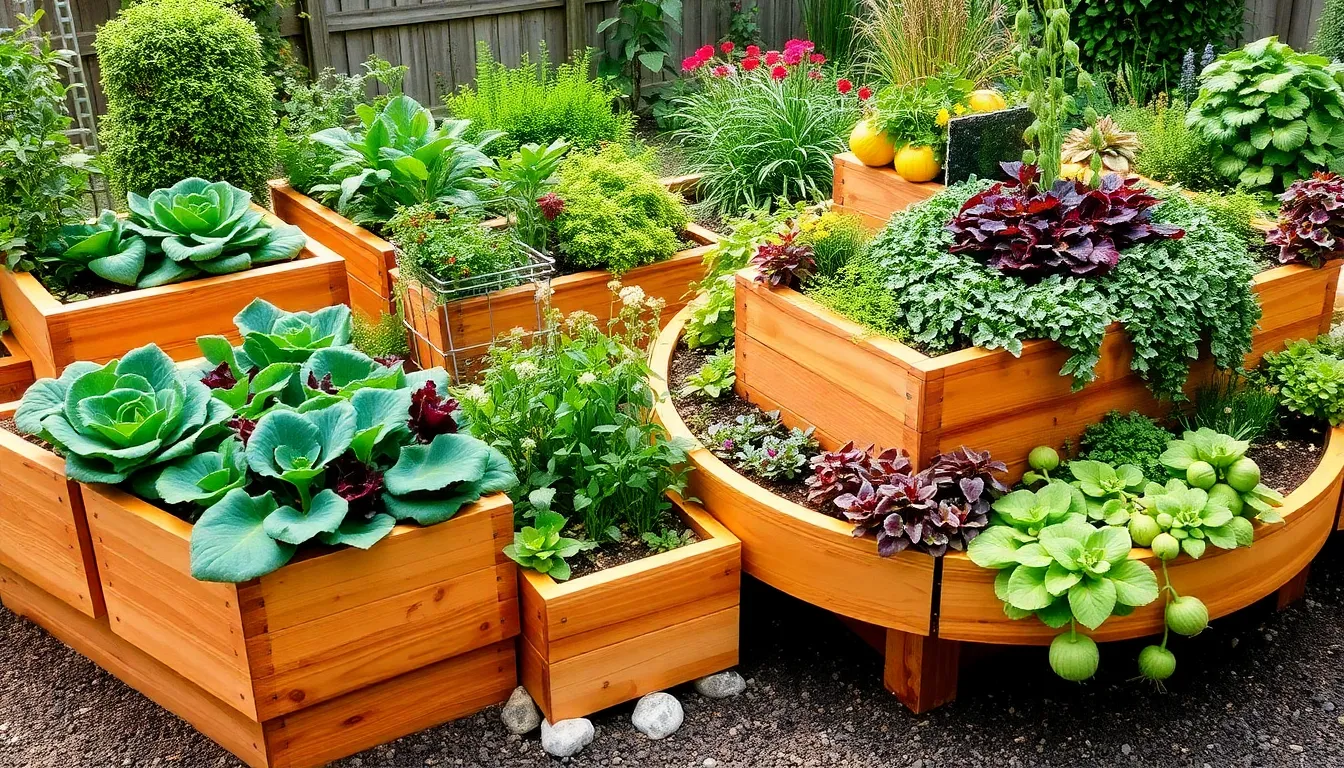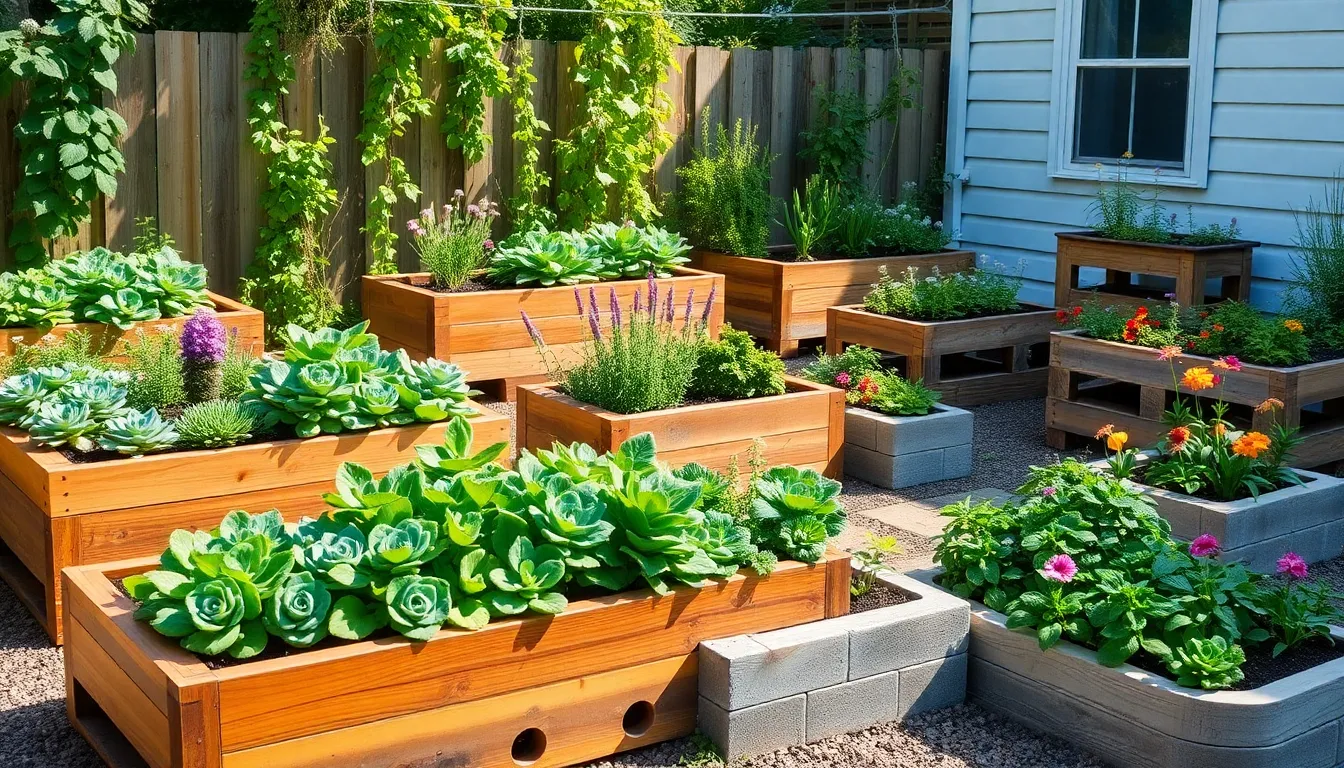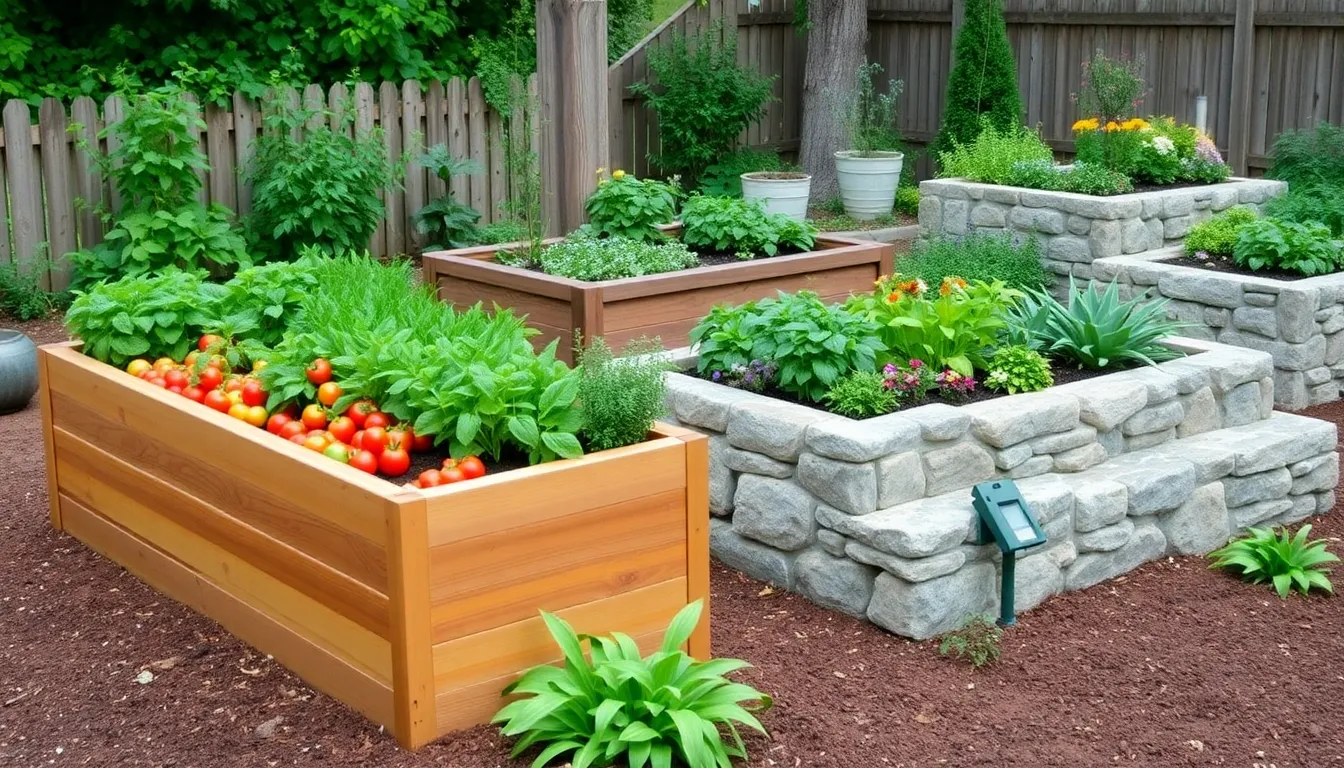Imagine transforming even the smallest of spaces into a lush, productive garden bursting with life and color. Vertical raised bed gardens offer a delightful solution for those short on space yet eager to cultivate their own green haven. Whether you’re a seasoned gardener or just starting out, the allure of vertical gardening invites you to explore new heights—literally and figuratively—in your planting endeavors. By elevating your garden, you can maximize your growing area and create a stunning visual impact that is both functional and beautiful.
The importance of vertical raised bed gardens extends beyond aesthetics; they offer practical benefits such as improved drainage, easier access, and efficient use of sunlight. These gardens are not just a trend; they are a testament to the innovative spirit of gardeners who refuse to be limited by horizontal constraints. In this article, you’ll discover 13 inspiring plans that cater to various skill levels, from simple setups for beginners to more complex designs that challenge experienced gardeners. Each plan is crafted to guide you step-by-step, ensuring that your vertical garden is a thriving success.
Prepare to dig into a world where upward growth and creativity flourish side by side. Here, you will learn how to select the best materials, choose the right plants, and implement strategies that ensure your garden thrives season after season. With our guidance, you’ll soon find that vertical gardening is not only achievable but also immensely rewarding. Embrace the joy of nurturing a garden that reflects your unique vision, all while making the most of the space you have.
Introduction to Vertical Raised Beds
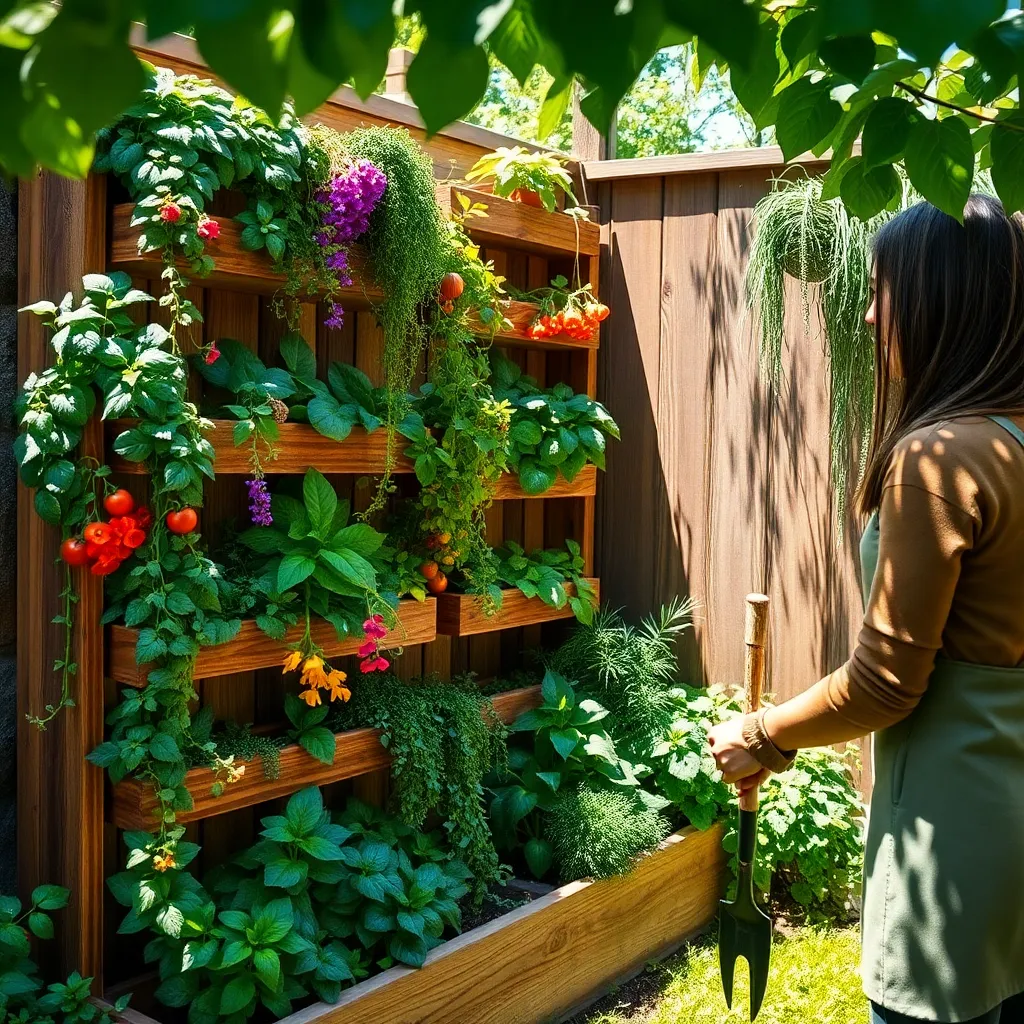
Vertical raised beds are an innovative solution for maximizing space in your garden while providing optimal growing conditions for your plants. They allow you to grow a variety of plants in a small footprint, making them ideal for urban gardens or limited spaces.
When setting up a vertical raised bed, it’s crucial to choose a location that receives at least six hours of sunlight daily. Proper sunlight exposure ensures that your plants can photosynthesize effectively, promoting healthy growth.
Select a high-quality, well-draining soil mix to fill your vertical beds, as this will support plant root health and prevent waterlogging. Consider mixing in organic compost to enhance soil fertility and provide essential nutrients to your plants.
Watering needs for vertical raised beds can vary, but generally, they require more frequent watering than traditional beds due to increased exposure. It’s advisable to water early in the morning to reduce evaporation and ensure your plants have adequate moisture throughout the day.
For beginners, leafy greens like lettuce, spinach, and herbs are excellent choices to start with, as they thrive in vertical setups. Experienced gardeners might explore growing compact fruiting plants such as strawberries or cherry tomatoes, which also perform well in these environments.
Benefits of Vertical Garden Systems
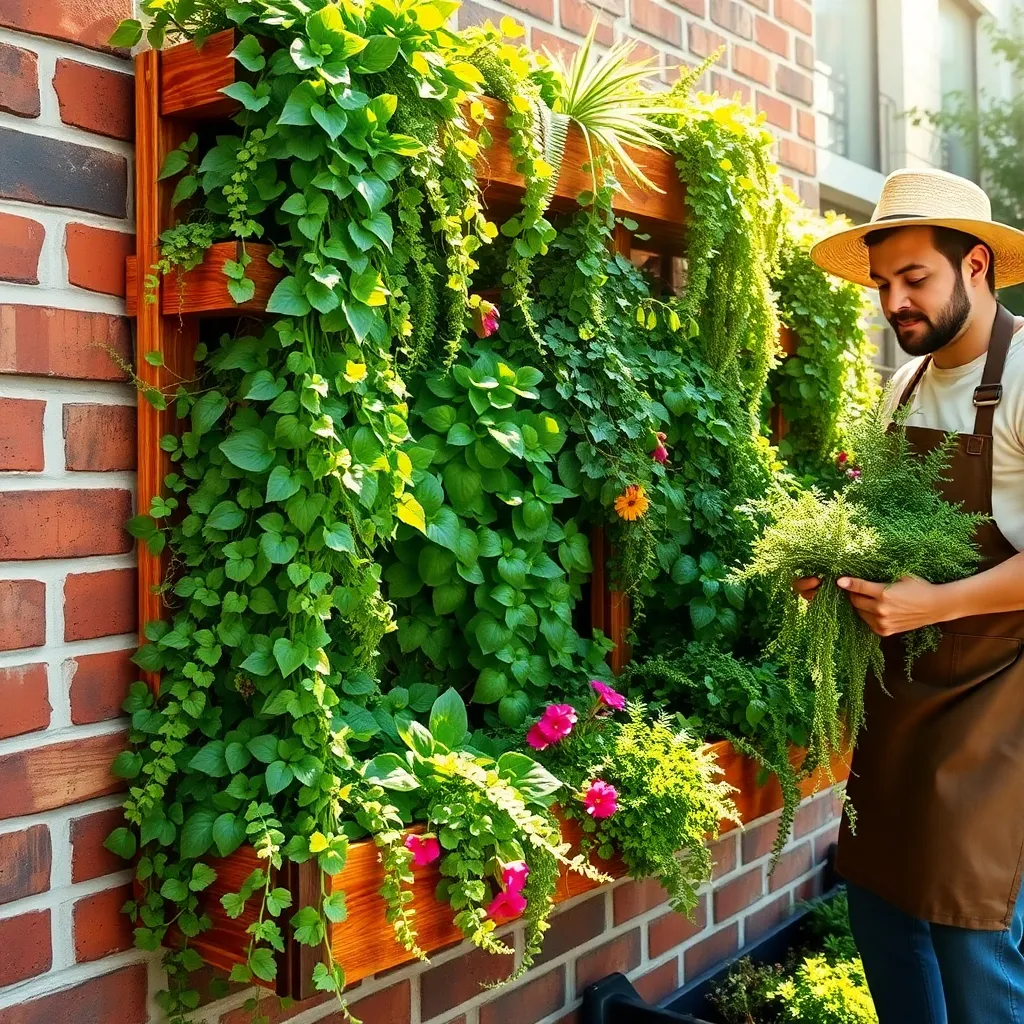
Vertical garden systems offer a range of benefits that make them an excellent choice for both novice and seasoned gardeners. They maximize space, allowing you to grow more plants in a limited area, which is particularly beneficial for those with small gardens or urban spaces.
By using vertical systems, you can also improve air circulation around your plants. This is crucial because it helps reduce the risk of fungal diseases, which thrive in damp, stagnant air conditions often found in traditional garden layouts.
Another advantage is that vertical gardens are generally easier to maintain. Plant care tasks like watering, pruning, and harvesting are simplified since plants are more accessible, reducing the need to bend or stretch awkwardly.
To get started, consider using lightweight soil mixes to ensure proper drainage and root growth. A well-draining mix reduces the risk of root rot and other moisture-related issues, which is crucial for vertical setups where excess water can easily accumulate.
For optimal plant health, ensure that your vertical garden receives adequate sunlight, typically four to six hours of direct sunlight per day. If sunlight is limited, choose shade-tolerant plants like ferns or certain varieties of lettuce that thrive in lower light conditions.
Advanced gardeners may experiment with companion planting in vertical systems to boost plant health and yield. For instance, pairing climbing beans with corn can create a natural support system while enhancing soil nitrogen levels, benefiting both crops.
Choosing the Ideal Materials
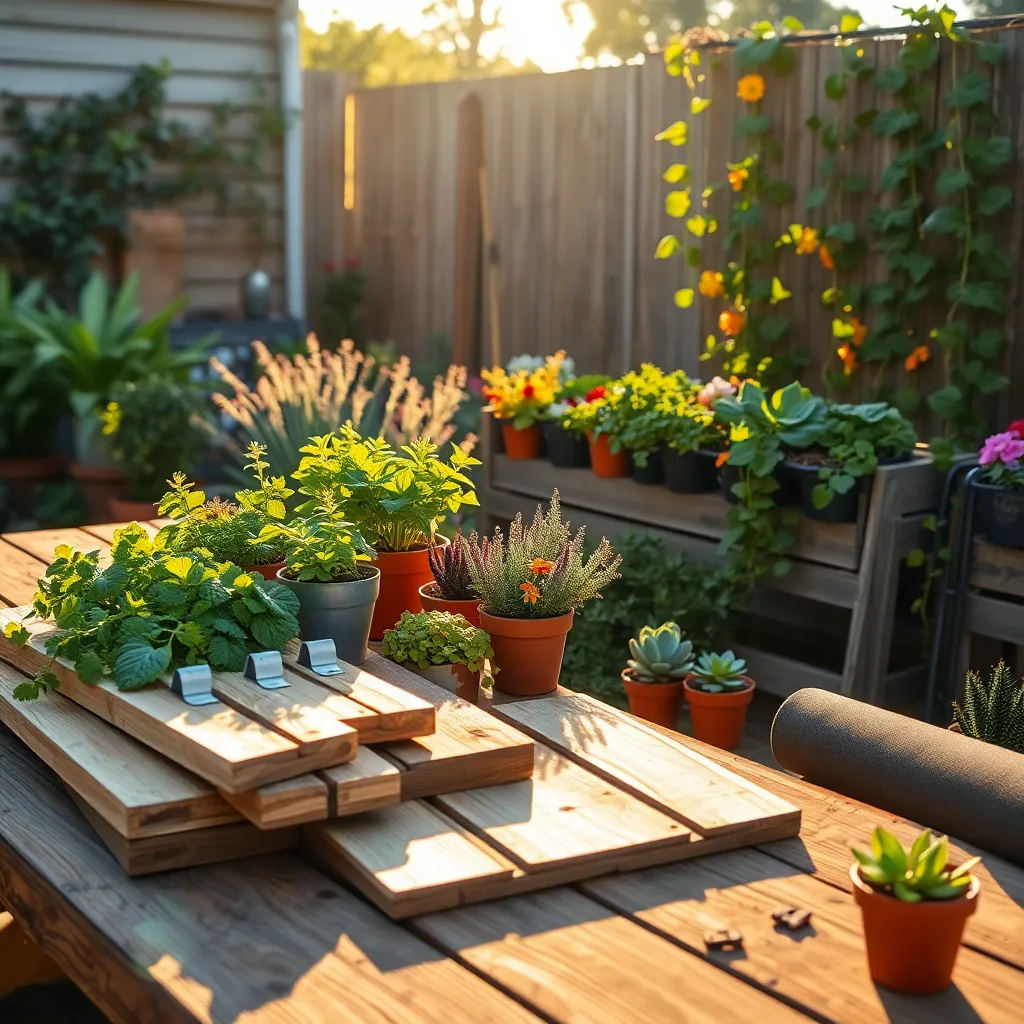
When selecting materials for your vertical raised bed garden, consider durability and weather resistance. Materials like cedar or recycled plastic are excellent choices due to their long-lasting nature and resistance to rot.
It’s essential to choose materials that are both environmentally friendly and safe for growing edibles. Avoid treated woods that may leach chemicals into the soil, potentially harming your plants.
For those looking to add a decorative touch, consider using metal or painted wood for your vertical structures. These materials not only add aesthetic appeal but also provide a sturdy framework for climbing plants.
Incorporating lightweight materials can make your vertical garden easier to assemble and move. Fabric planters or lightweight composite panels offer flexibility and ease of use, making them ideal for urban settings or balconies.
Designing Your Vertical Structure
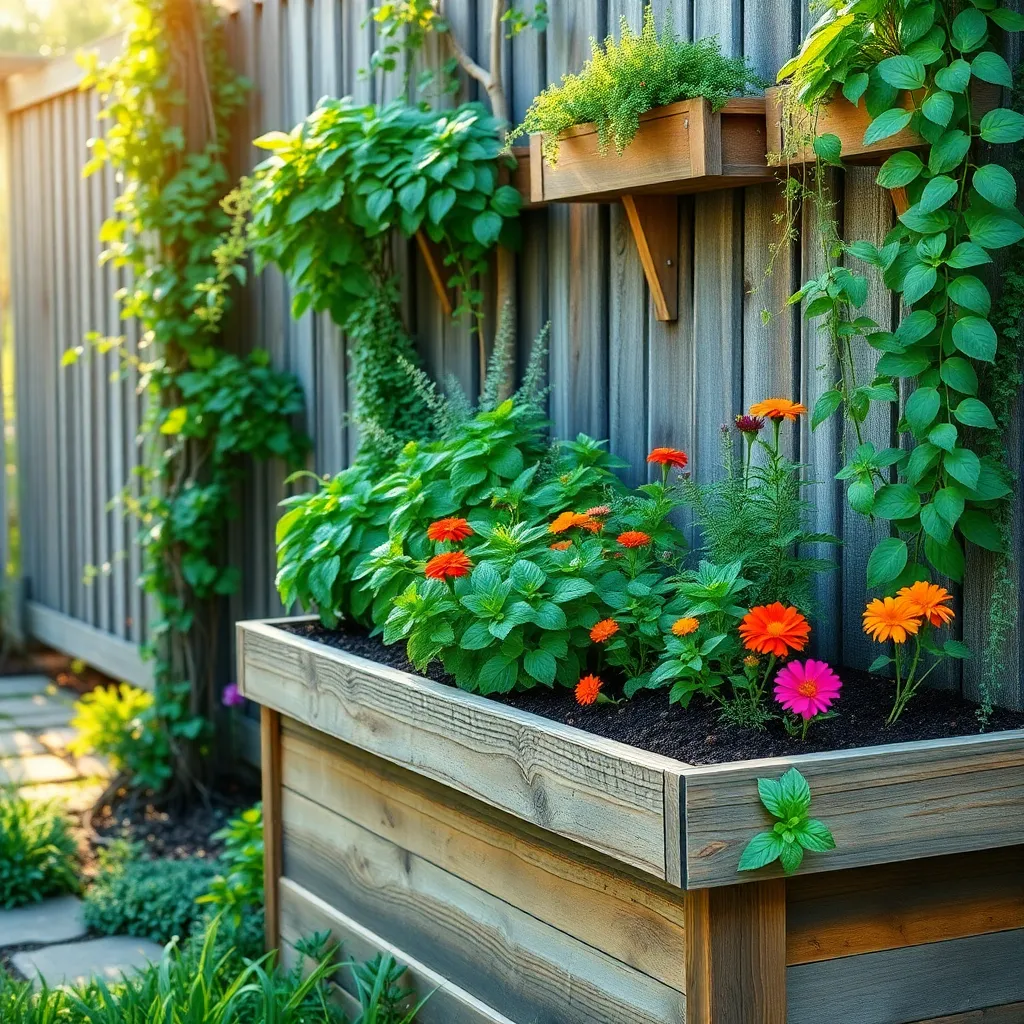
Vertical structures are the backbone of a successful vertical raised bed garden, providing support and maximizing space. Start by considering the height and stability of your structure, ensuring it can withstand wind and support the weight of mature plants.
Use materials like wood, metal, or PVC that can endure both the elements and the weight of climbing plants. Each material offers different advantages: wood is versatile and easily customizable, while metal is durable and low-maintenance.
Ensure your vertical structure is securely anchored to prevent it from toppling over. If you’re working with a wooden frame, consider using stainless steel screws and brackets for added durability and resistance to weather.
To maximize plant growth, position your structure in a spot that receives adequate sunlight, ideally six to eight hours a day. Consider the sun’s path throughout the year to ensure consistent lighting, which is crucial for healthy plant development.
Optimizing Space for Maximum Yield
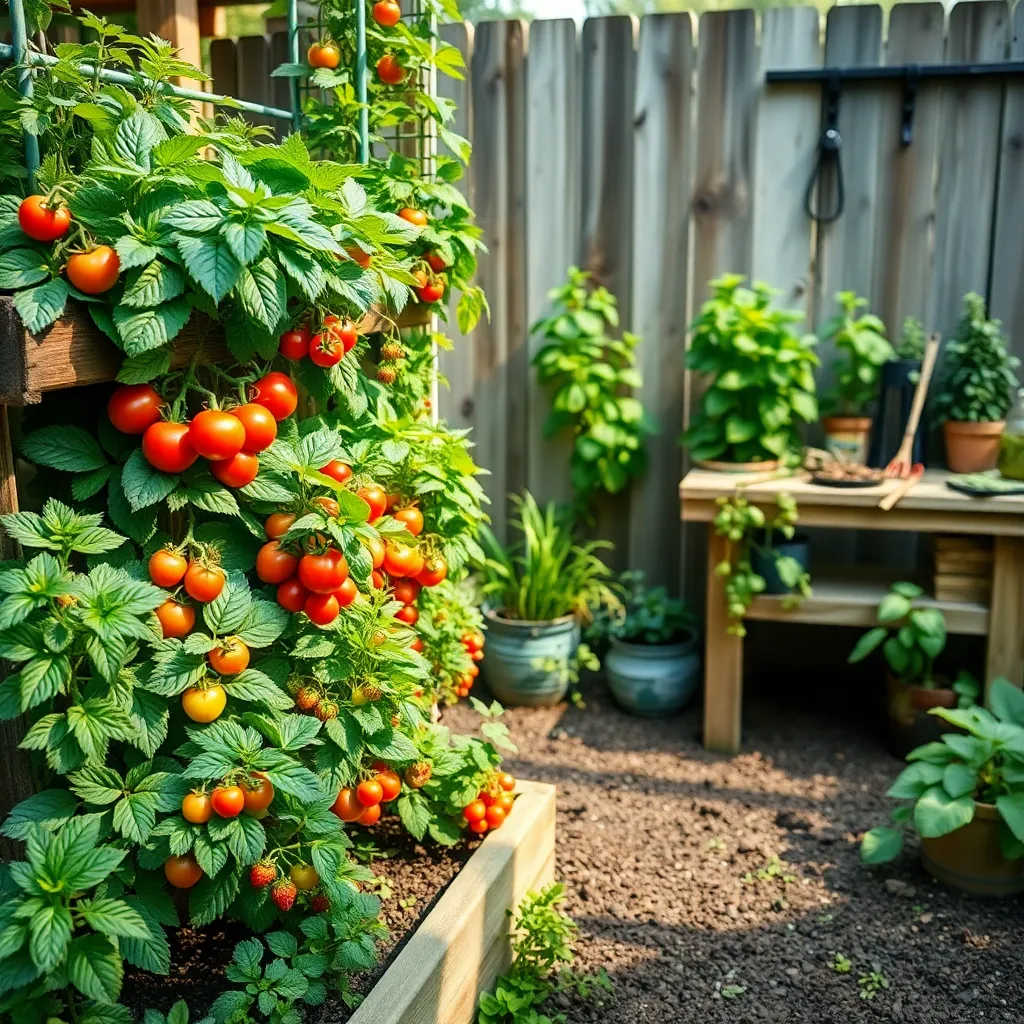
Optimizing space in a vertical raised bed garden is crucial for maximizing yield. One effective method is to use plants with varying growth habits, such as combining climbing plants with compact ones.
For instance, you can grow tomatoes, which naturally climb, alongside bush beans that stay low. This not only utilizes vertical space but also creates a microclimate that benefits both plant types.
Soil quality is another important factor when aiming for high yields in a compact space. Choose a nutrient-rich, well-draining soil mix that supports healthy root development, such as a combination of compost, peat moss, and perlite.
Watering is critical in vertical gardening, where soil tends to dry out faster. Consider installing a drip irrigation system to ensure consistent moisture or water deeply every few days, allowing the soil to dry slightly between waterings.
For beginner gardeners, starting with hardy plants like lettuce and spinach can be very rewarding. These leafy greens thrive in cooler temperatures and can be harvested multiple times for continuous yield.
Experienced gardeners might experiment with more demanding crops like cucumbers and peas. Train these plants on trellises within your vertical raised bed to save space and support their climbing nature.
Planning Plant Varieties and Layout
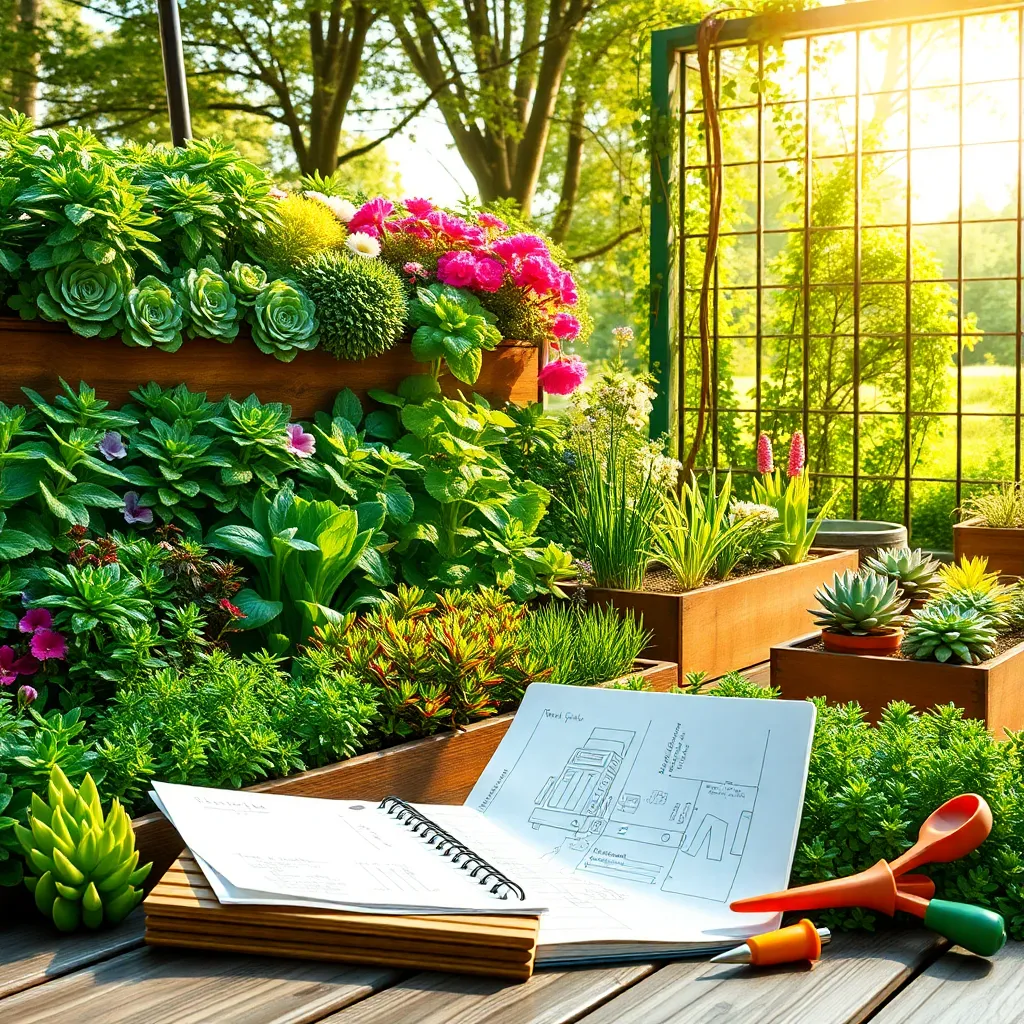
When planning plant varieties and layout for your vertical raised bed garden, start by considering the specific needs of each plant. Choose plants that thrive in similar conditions to ensure a harmonious growing environment. Grouping plants with similar light and water requirements simplifies care and maximizes space usage. For instance, you can pair sun-loving herbs like basil and thyme together.
It’s essential to think vertically when designing your plant layout. Tall plants like tomatoes or pole beans can be placed at the back to avoid shading shorter plants. This strategic planning improves light distribution and facilitates easier access for harvesting and maintenance. Additionally, using trellises or other support structures can help train vining plants upwards, saving ground space for other crops.
For optimal plant health, consider the soil type and watering needs of your selected varieties. Use a high-quality, well-draining potting mix to support root development and prevent waterlogging. Watering frequency will vary with plant type and environmental conditions, but typically, a deep watering once or twice a week is beneficial.
Advanced gardeners might explore interplanting techniques to further enhance their vertical garden’s productivity. For example, plant fast-growing crops like radishes alongside slower-growing ones such as peppers to make the most of your space. Experimenting with companion planting can deter pests and improve plant health, offering a natural boost to your garden’s ecosystem.
Constructing a Sturdy Framework
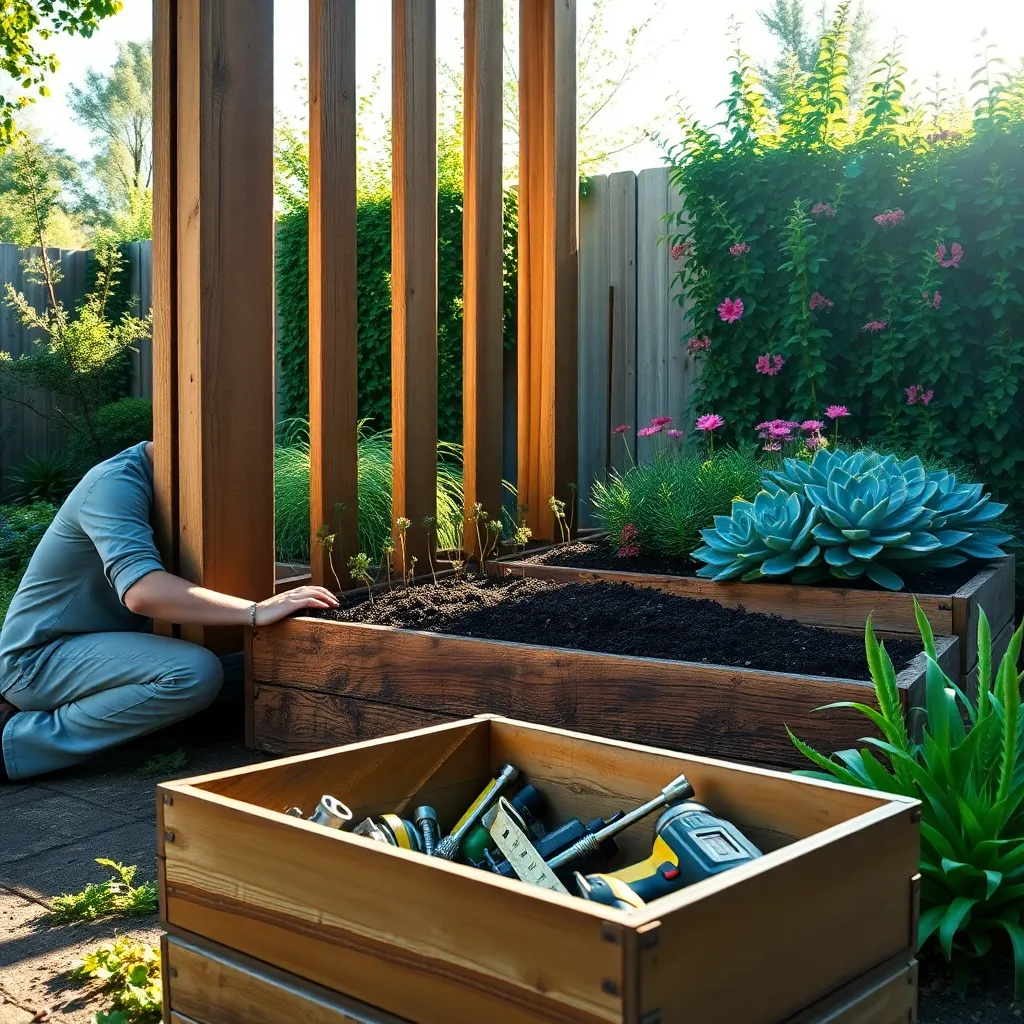
Creating a sturdy framework is crucial for the success of a vertical raised bed garden. Start by selecting durable materials like cedar or metal, which provide longevity and resilience against weather conditions.
Consider the weight of the soil, plants, and any additional supports when designing your framework. Use strong, weather-resistant fasteners to ensure that your structure remains stable and secure over time.
Begin by measuring and cutting your materials to fit the desired dimensions of your vertical garden. Assemble your framework on a flat surface, using a level to ensure your structure is even and balanced.
Drilling pilot holes before inserting screws can prevent splitting and ensure a snug fit for your components. Once assembled, anchor your framework securely into the ground or onto a stable surface to prevent tipping or shifting.
For enhanced stability, consider adding cross-braces at intervals along the back of your structure. Additionally, check all connections periodically and tighten or replace any loose hardware to maintain the integrity of your garden.
Advanced gardeners might incorporate a built-in irrigation system or trellis supports into the framework for more efficient plant care. These additions can save time and improve plant growth by ensuring consistent water supply and support for climbing plants.
Soil Mix for Vertical Gardens
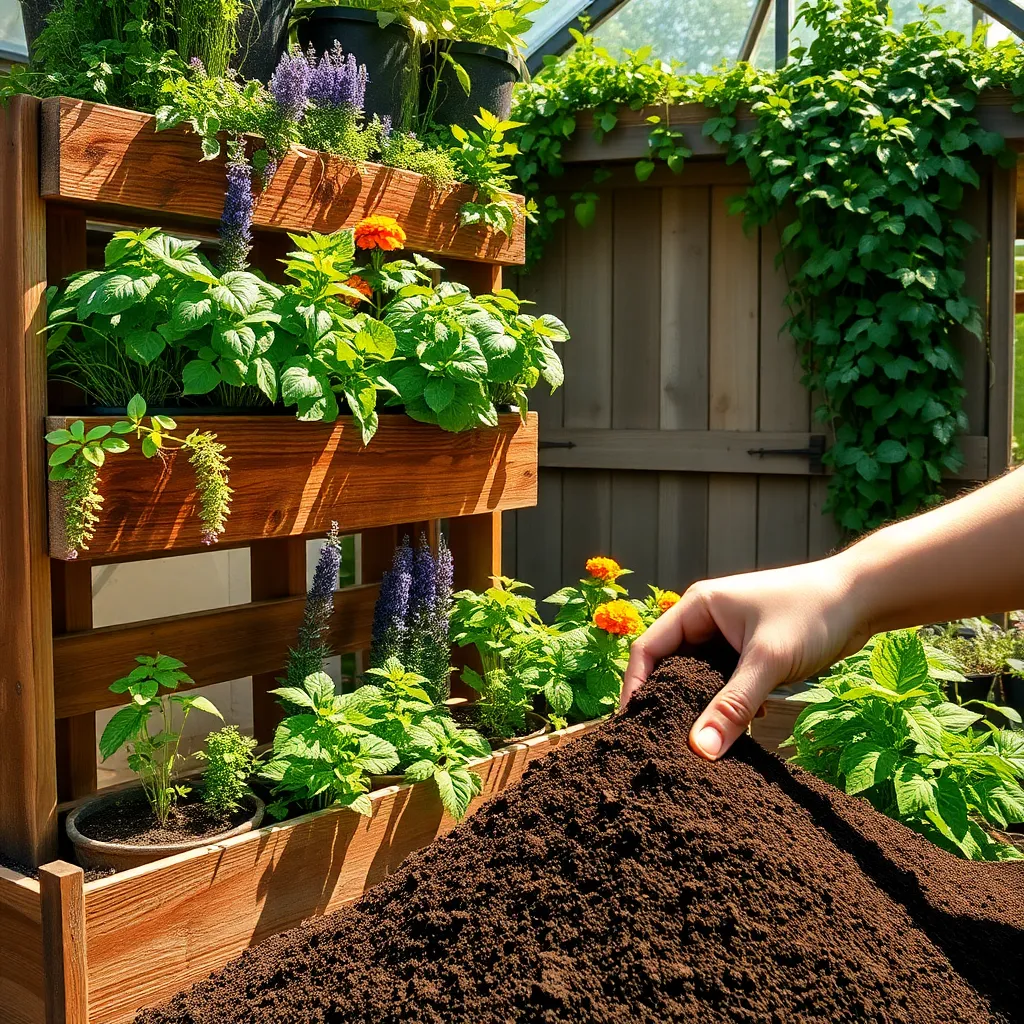
When setting up a vertical garden, choosing the right soil mix is crucial for success. The soil mix needs to be both lightweight and nutrient-rich to support plants growing in a restricted environment.
Begin with a base of high-quality potting soil that retains moisture yet allows for adequate drainage. To enhance drainage, mix in materials like perlite or vermiculite, which will help prevent root rot and maintain healthy plant growth.
Incorporate organic matter such as compost or well-aged manure to enrich the soil with essential nutrients. This addition will not only feed your plants but also improve the soil structure, making it more conducive to root development.
For gardeners looking to optimize plant health, consider adding slow-release fertilizers to the mix. These fertilizers provide a steady supply of nutrients that can sustain plants throughout the growing season, especially in the nutrient-limited environment of vertical gardens.
Irrigation Solutions for Vertical Beds
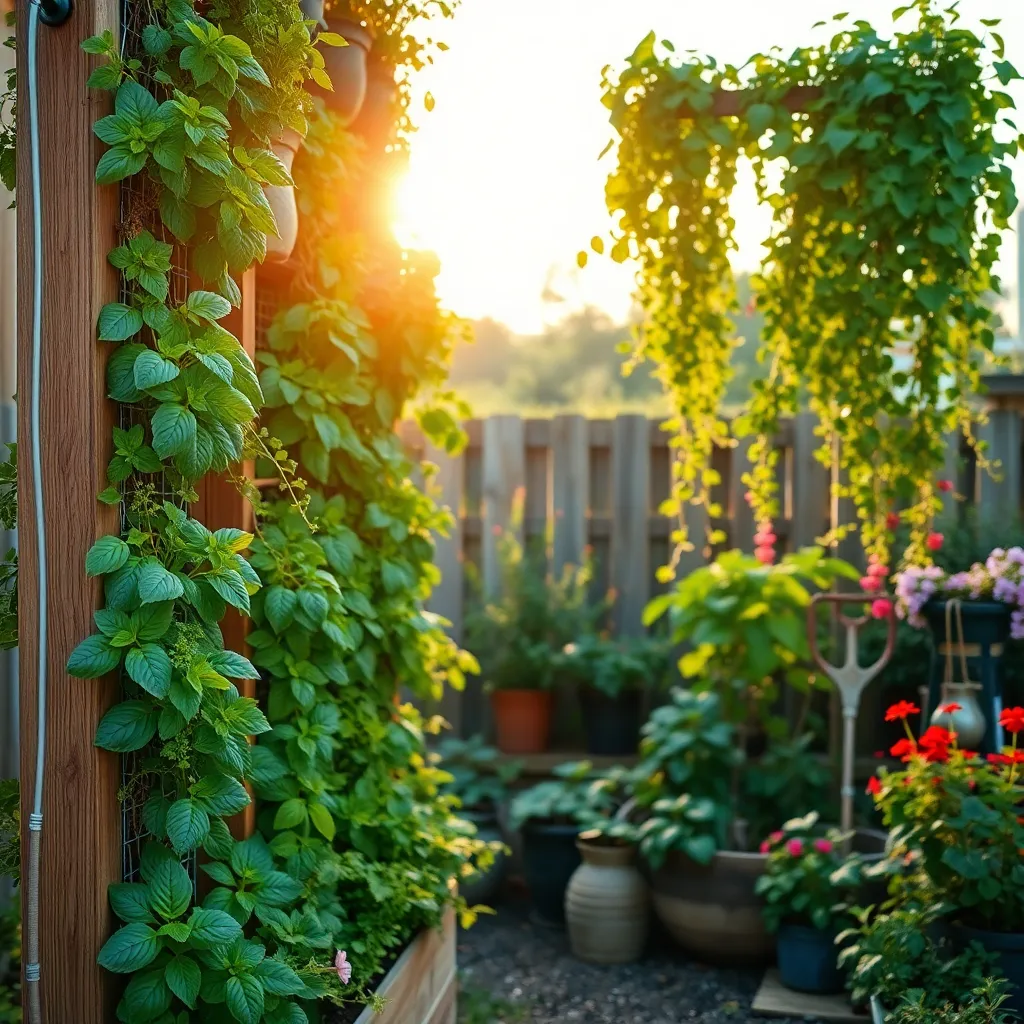
Vertical raised beds offer a unique set of irrigation challenges due to their structure. It’s crucial to ensure that water reaches the roots of all plants, including those at the top and bottom of the bed. Drip irrigation systems are highly effective for vertical gardens, as they deliver water directly to the root zone. This method reduces water wastage and ensures consistent moisture levels, which is vital for plant health.
For beginners, setting up a basic drip irrigation system can be straightforward and rewarding. Start by laying a main supply line at the top of your vertical bed and use drip tubing or soaker hoses to reach each tier. Advanced gardeners can incorporate timers to automate watering schedules, ensuring plants are consistently hydrated without manual intervention. This is particularly beneficial during hot or dry periods when plants may require more frequent watering.
It’s important to monitor the moisture levels in your vertical beds regularly, as different plants have varying water requirements. Consider using a moisture meter to help determine when and how much to water. Adjust the irrigation system as needed based on seasonal changes and plant growth. Remember, overwatering can be just as harmful as underwatering, so it’s essential to find a balance that suits your specific plant selection.
To further enhance water retention, consider adding water-retentive materials to your soil mix, such as coconut coir or water-absorbing polymers. These materials can help maintain consistent moisture levels, especially in the upper reaches of your vertical bed. Experiment with different irrigation techniques and soil amendments to find the best combination for your vertical gardening setup.
Sunlight and Shade Considerations
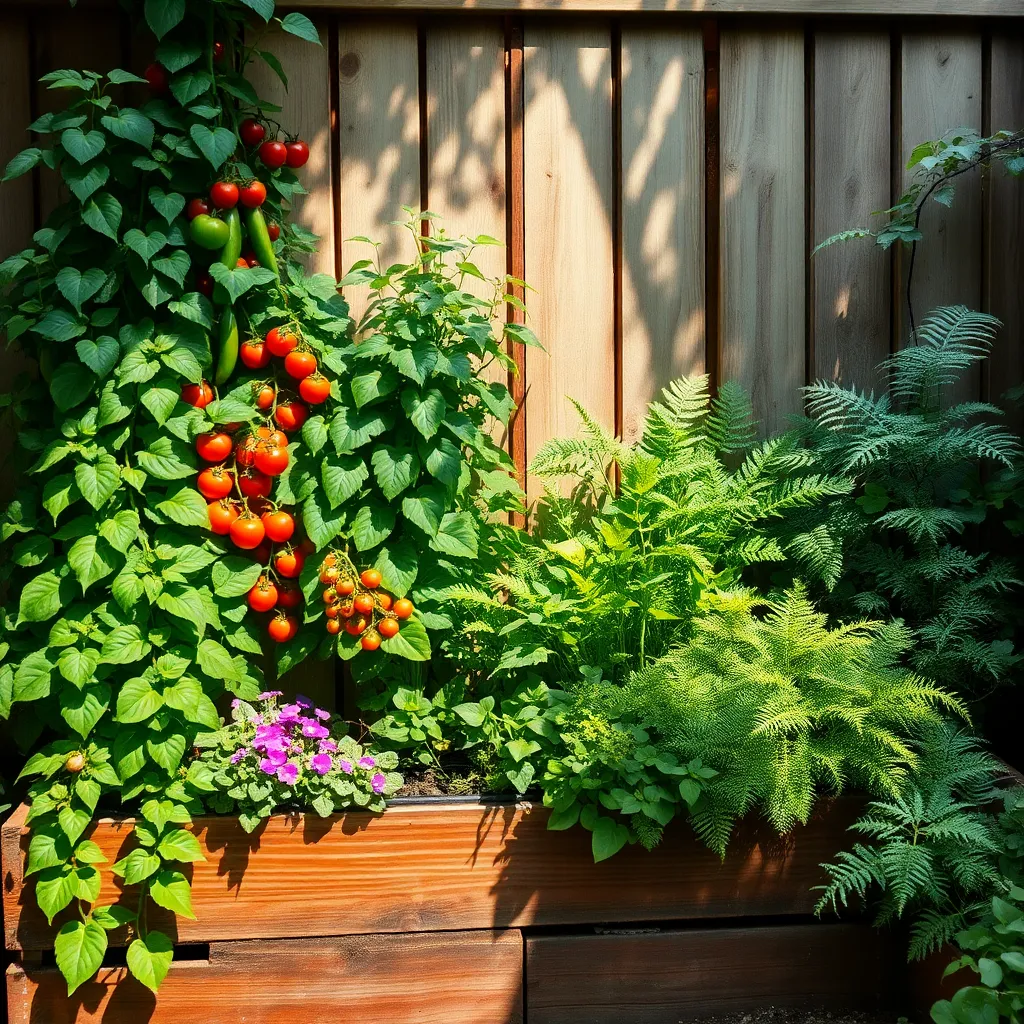
When planning your vertical raised bed garden, considering the sunlight and shade requirements of your plants is crucial. Different plants thrive in varying light conditions, so it’s important to know the specific needs of each species you choose to grow.
To ensure the success of your garden, place sun-loving plants like tomatoes and peppers in areas that receive at least six to eight hours of direct sunlight per day. Conversely, plants such as lettuce and spinach can tolerate more shade and would benefit from being placed in less sunny spots.
It’s beneficial to observe your garden area throughout the day to understand how sunlight moves and where shade naturally occurs. By doing so, you can strategically position your vertical beds to maximize the light exposure for each plant type.
For those living in particularly hot climates, consider using shade cloths or positioning taller plants to provide some relief to more sensitive varieties. This approach can prevent leaf scorch and help maintain consistent growth across your garden.
Maintenance Tips for Vertical Gardens
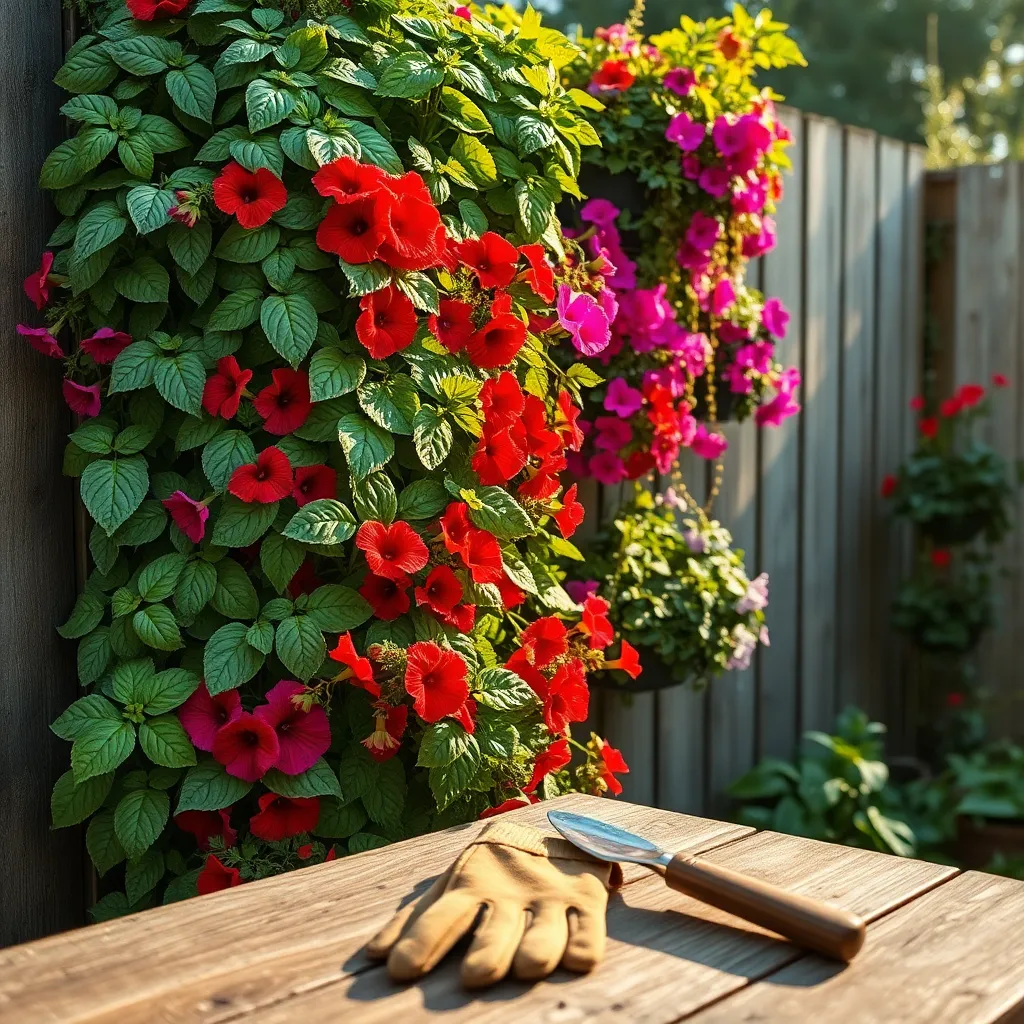
Regular maintenance is crucial to the success of vertical gardens, ensuring your plants remain healthy and vibrant. Inspect your garden weekly for signs of pests or diseases, as early detection is key to preventing widespread issues.
Watering is particularly important in vertical gardens due to their design, which can lead to faster drying of soil. Consider installing a drip irrigation system to provide consistent moisture, especially in the top tiers where water tends to evaporate more quickly.
Soil quality plays a significant role in plant health, so make sure to use a high-quality potting mix that’s rich in nutrients. Avoid garden soil in vertical setups, as it can become compacted and hinder root growth.
Fertilization is another critical aspect of maintaining a thriving vertical garden. Use a balanced, water-soluble fertilizer every four to six weeks to replenish nutrients lost through regular watering.
Pruning helps manage plant size and encourages bushier growth, which is essential in vertical gardens where space is limited. Trim back any overgrown or dead foliage to improve air circulation and light penetration.
For those looking to take their vertical gardening skills to the next level, consider experimenting with companion planting. This technique can maximize space and deter pests, creating a more resilient ecosystem within your vertical garden.
Seasonal Planting and Rotation
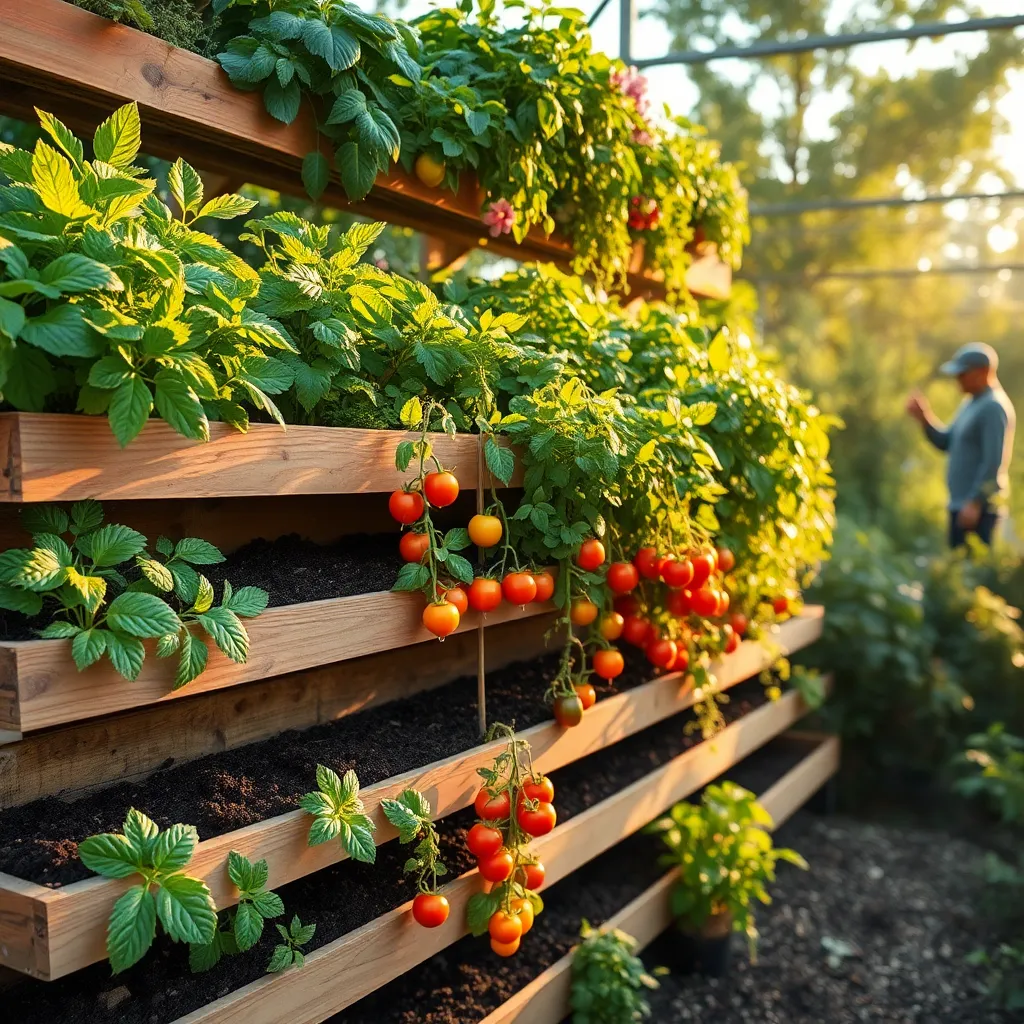
Rotating crops in your vertical raised bed garden is essential for maintaining soil health and reducing pest issues. By changing the location of plant families each season, you can prevent soil nutrient depletion and minimize disease build-up.
When planning your seasonal planting, consider the specific requirements of each plant, such as sunlight and soil type, to optimize growth. For instance, tomatoes thrive in well-drained soil with plenty of sunlight, while leafy greens like spinach prefer cooler temperatures and partial shade.
One effective crop rotation strategy involves dividing your vertical garden into sections dedicated to different plant families, such as nightshades, legumes, and brassicas. This method not only helps manage nutrients in the soil but also enhances biodiversity, which can naturally deter pests.
For beginner gardeners, it’s helpful to start with a simple rotation plan that includes easy-to-grow plants like lettuce, radishes, and beans. As you gain experience, you can incorporate more complex rotations and experiment with companion planting to boost yield and plant health.
Advanced gardeners might consider using cover crops during the offseason to improve soil structure and fertility. Cover crops like clover or vetch can be sown after harvesting your main crops, and they work as a natural way to enrich the soil for the next planting season.
Remember, successful plant rotation and seasonal planting require observation and adaptation. Keep a garden journal to track what works best in your vertical raised beds and adjust your planting strategy as needed for the best results.
Troubleshooting Common Vertical Garden Issues
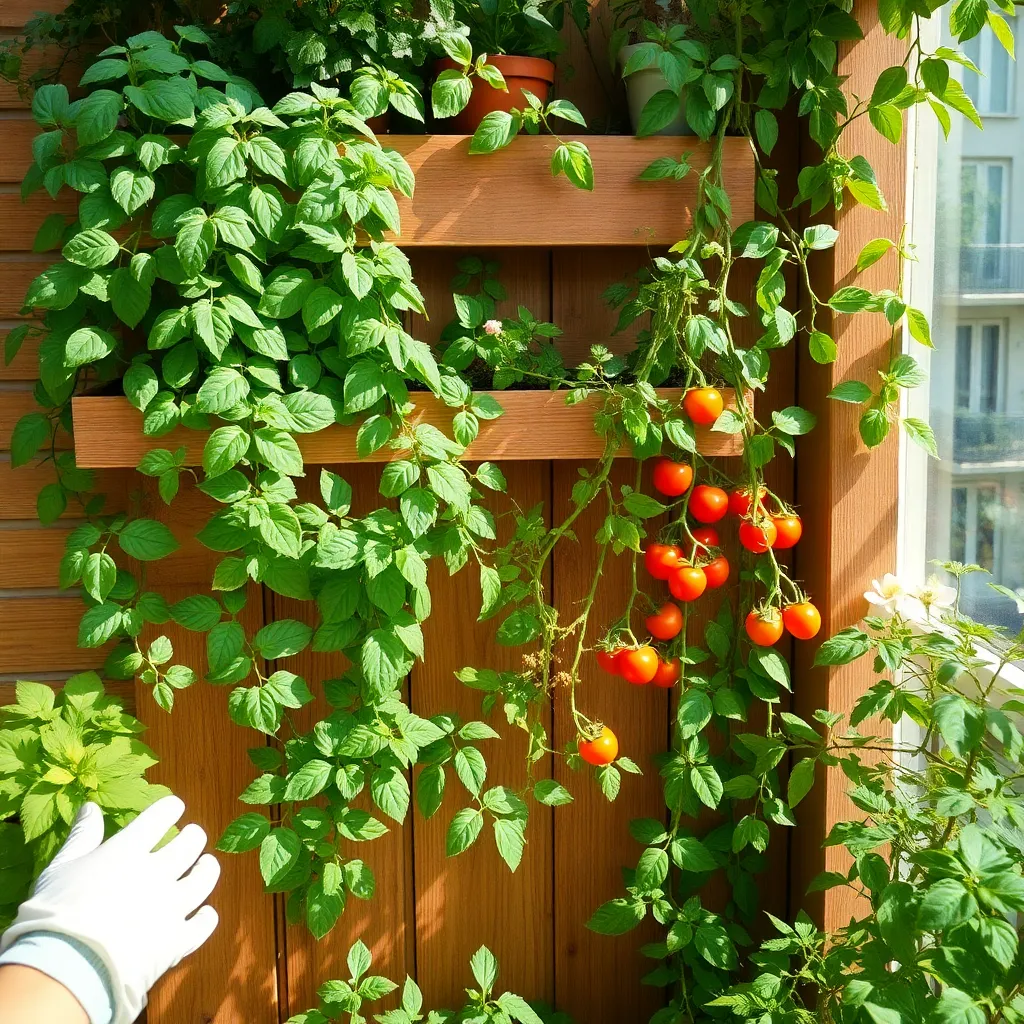
Vertical gardens can face unique challenges, but with the right approach, these issues are often easy to manage. One common problem is uneven watering, which can cause some plants to thrive while others struggle. To ensure even distribution of moisture, consider using a drip irrigation system or self-watering planters. These systems can help maintain consistent soil moisture levels, which is crucial for plant health.
Pests also pose a threat to vertical gardens, as compact spaces can harbor insects. Regularly inspect your plants for signs of infestation, such as chewed leaves or discoloration. Employing natural pest control methods like neem oil or introducing beneficial insects like ladybugs can keep these invaders at bay. This proactive approach minimizes damage before it becomes widespread.
Insufficient light is another issue that vertical gardens may encounter, especially when positioned against a wall. Ensure your plants receive adequate sunlight by choosing a location that gets at least six hours of direct sunlight daily. If natural light is scarce, installing grow lights can provide the necessary illumination, allowing your garden to flourish regardless of its placement.
Soil quality is crucial for the success of any garden, and vertical gardens are no exception. Use a lightweight, well-draining potting mix specifically designed for containers to support healthy root development. Incorporate organic matter, such as compost or worm castings, to enhance nutrient availability and promote vigorous growth. With these adjustments, your vertical garden can thrive in even the smallest of spaces.
Conclusion: Growing Success with These Plants
In the enriching journey through ’13 Vertical Raised Bed Garden Plans,’ we explored essential relationship concepts such as communication, trust, adaptability, patience, teamwork, empathy, nurturing, conflict resolution, shared goals, boundaries, individual growth, appreciation, and commitment. These foundational elements are akin to the vibrant layers of a flourishing garden, each contributing to the overall beauty and health of your relationship.
As a tangible next step, choose one concept to focus on this week. Perhaps it’s enhancing your communication skills or dedicating time to nurture empathy and understanding. By taking small, deliberate actions, you can cultivate a stronger, more resilient bond with your partner.
Remember to save this article for future reference, as it can serve as a valuable guide whenever you feel the need to refresh your relationship strategies. Just as gardens need ongoing care and attention, so do relationships. By revisiting these key concepts, you ensure your relationship continues to grow and thrive.
Looking ahead, embracing these principles can pave the way for a lasting, fulfilling partnership. Empower yourself by taking proactive steps today, and watch your relationship blossom into its fullest potential. 🌱💑

